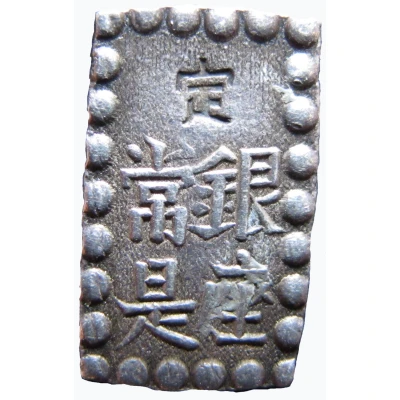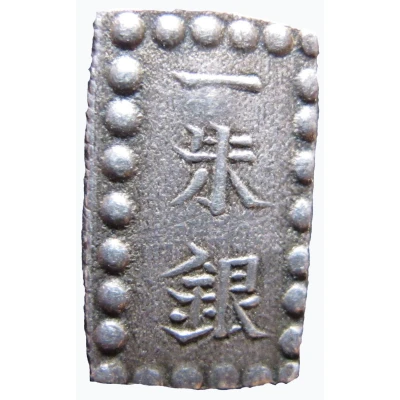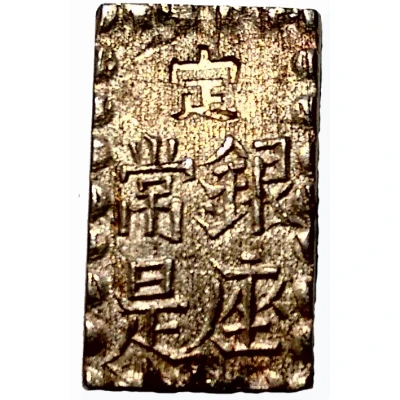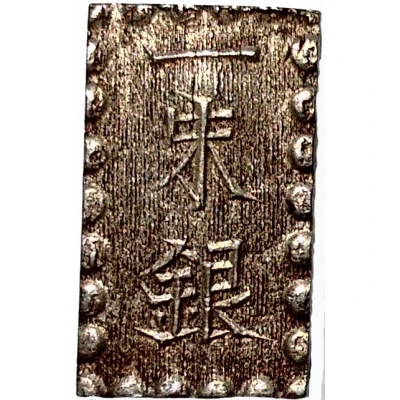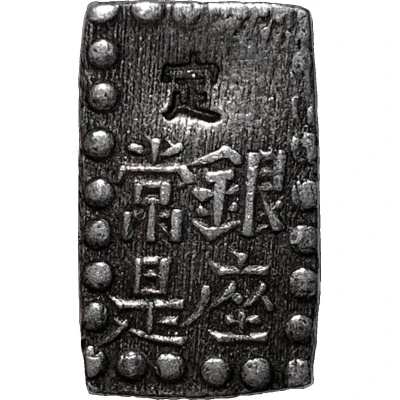
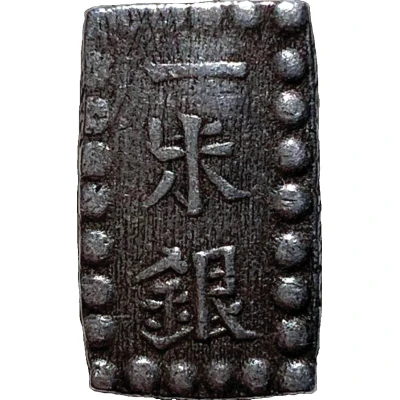

© iflysfo (CC BY-NC)
1 Shu "Ansei Isshugin" ND
| Silver | 1.86 g | - |
| Issuer | Japan |
|---|---|
| Emperor | Kōmei (1846-1867) |
| Type | Standard circulation coin |
| Years | 1854-1865 |
| Value | 1 Shu (1⁄16) |
| Currency | Ryō (1595-1874) |
| Composition | Silver |
| Weight | 1.86 g |
| Size | 16 × 9.5 mm |
| Thickness | 1 mm |
| Shape | Rectangular (irregular) |
| Technique | Hammered, Countermarked |
| Orientation | Medal alignment ↑↑ |
| Demonetized | Yes |
| Updated | 2024-10-05 |
| Numista | N#282638 |
|---|---|
| Rarity index | 58% |
Reverse
3 vertical kanji in pearl border
Script: Chinese (traditional, regular script)
Lettering:
一
朱
銀
Translation: One shu silver
Edge
Vertical reeding on short sides,
slanted reeding on long sides
Interesting fact
The 1 Shu "Ansei Isshugin" coin from Japan, made of silver and weighing 1.86g, was issued during the Ansei era (1854-1865) and features a unique design that reflects the cultural and historical significance of the time. The obverse side of the coin depicts a stylized chrysanthemum, which was a symbol of longevity and good fortune in Japanese culture, while the reverse side features the Japanese characters for "Ansei" and "Isshugin," which translates to "peace" and " silver coin," respectively. This coin was used as a means of currency during a time of rapid modernization and cultural exchange between Japan and the West, and its design reflects the blending of traditional Japanese motifs with Western influences.
